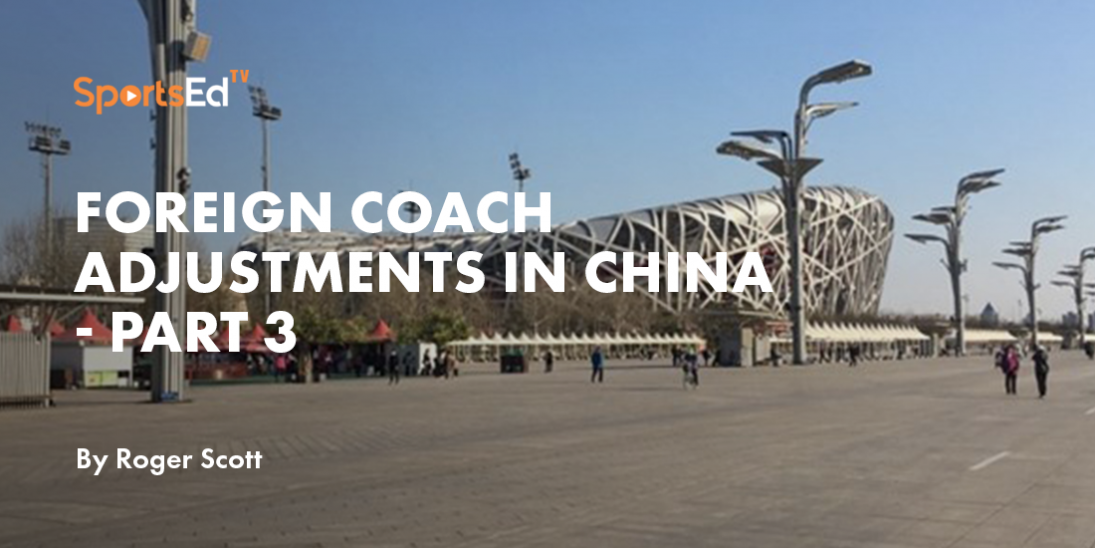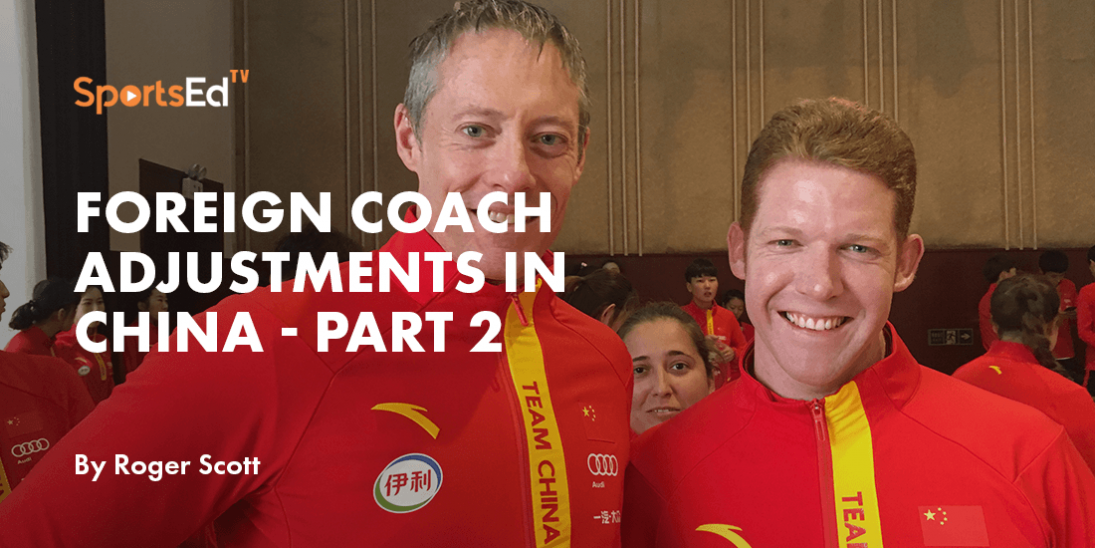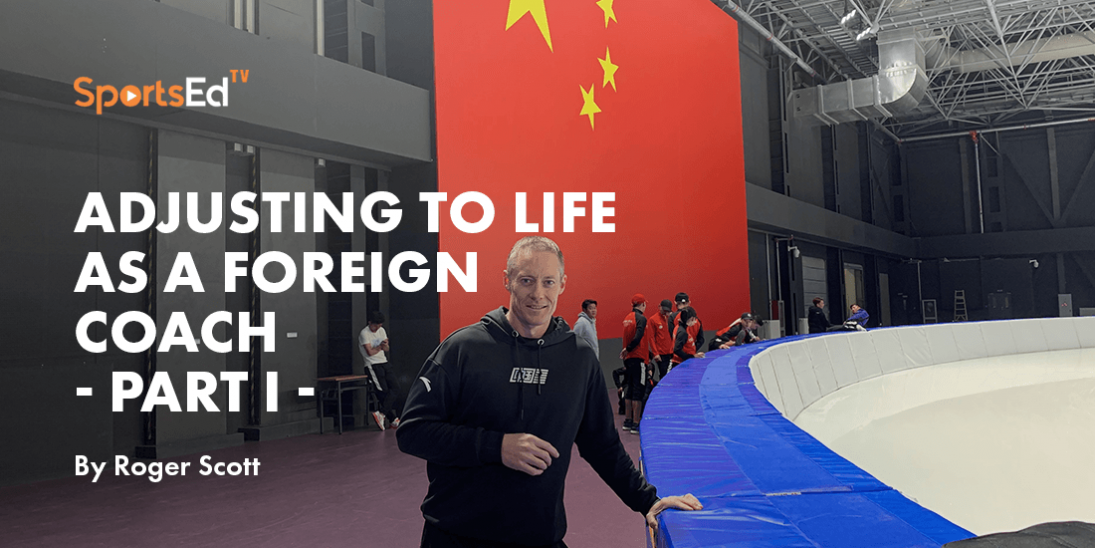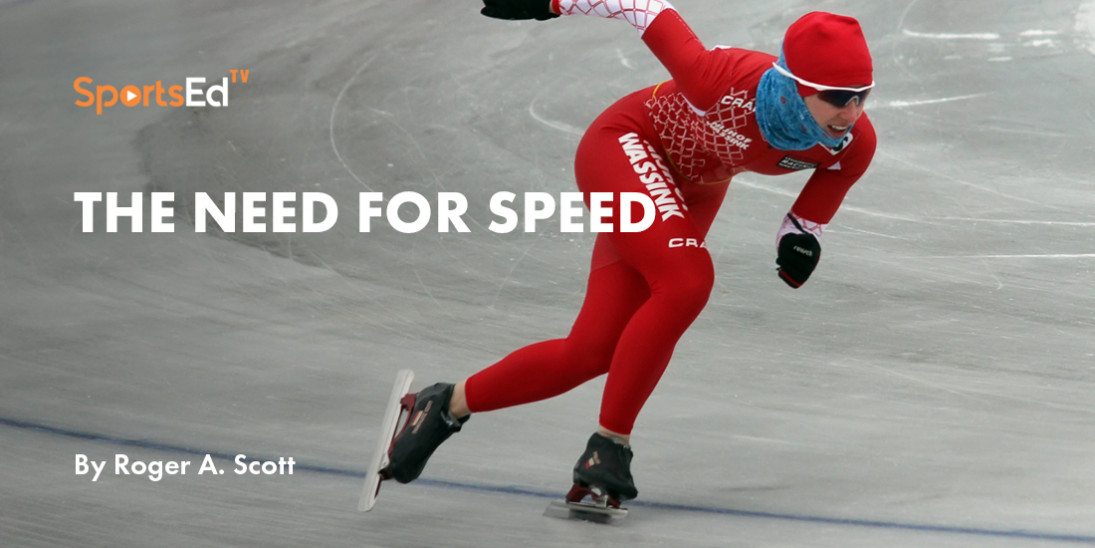Strength And Conditioning, Speed Skating
Welcome and thanks for visiting...

Are You on the Right Track?
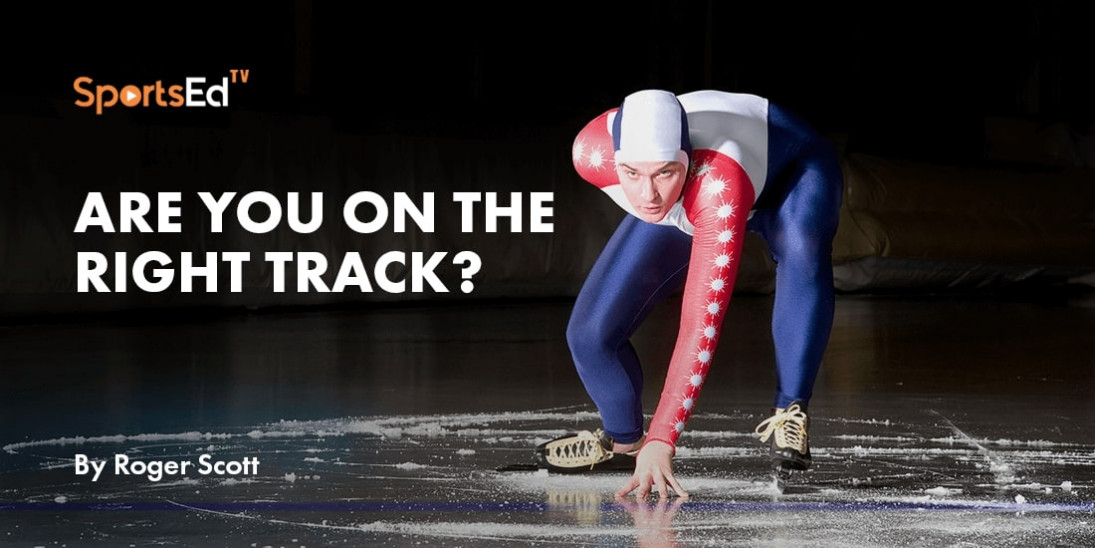
In 2019, I had a unique and incredible opportunity to work for the Chinese Olympic Team as a Strength & Conditioning Coach in the sport of Speed Skating. For those of you who are unfamiliar with this sport, there are 2 varieties within the Winter Olympics-- Long Track and Short Track. I was fortunate to work with and appreciate both. Here, we compare both styles.
Names in The Game
In Long Track, traditionally, The Netherlands (Dutch) is the best in the world (which would explain why I worked with so many of them on the coaching staff). American Eric Heiden (who won an unprecedented 5 Gold Medals at the 1980 Winter Olympics at 500m, 1000m, 1500m, 5000m, and 10,000m), American Shani Davis (whom I also worked with, is a 2-time Gold and 2-time silver medalist) and Dutch Skater Sven Kramer (9 overall Olympic medals including 4 Gold) are a few names that may be familiar to some.
In Short Track, South Korea, China, and the United States are always among the top contenders for the podium in the Olympics. The most decorated American Olympian at the Winter Olympics is Apolo Ohno (8 Olympic medals including 2 Gold). The most decorated Chinese Winter Olympic athlete (4 Olympic gold medals and 6 overall) is Wang Meng (Former Director of Chinese National Speed Skating – both long and short track – during my time with the team).
Long Track Overview
Also known as just plain “Speed Skating,” this is contested on a 400m oval, similar to a 400m running track. In the Winter Olympics, this was held in an outdoor venue until permanently moving indoors in 1994 (Lillehammer). Men began competing in Speed Skating at the Olympics in 1924, and women in 1932. The International Skating Union conducts World Championships / Olympics at 500, 1000, 1500, 5000, and 10,000-meters (men) and 500, 1000, 1500, 3000, and 5000 meters (women). With only 2 skaters per race (skating against time and not necessarily against one another), and a wide lane, there are fewer accidents than in short track, with the exception being the mass start.
Current world record times:
500m (Men) 33.6s (Women) 36.36s
1000m (Men) 1.05.69 (Women) 1.11.61
3000m (Women only) 3.52.02
5000m (Men only) 6.01.86

Olympic Oval at the University of Calgary, Alberta Canada. Host of the 1988 Winter Olympics and Known As the Fastest Ice in the World
Short Track Overview
This is held on an international-sized hockey rink (60m x 30m) at a 1 lap distance of 111.12m. It was a demonstration sport at the 1988 Winter Olympics (Calgary) and a full Olympic sport in 1992 (Albertville). The International Skating Union conducts World Championships / Olympics at 500, 1000, and 1500 meters for both men and women, along with a 3000-meter relay (women) and 5000-meter relay (men). A new event being introduced at the upcoming 2022 Beijing Winter Olympics is a 2000m Mixed Gender Team Relay. With between 4-6 skaters in each race, it becomes somewhat like “NASCAR on ice.” Just a lot of controlled chaos, with potential collisions at every turn. And the relays are even crazier. The start off the line for the 500m race is critical to gain the inside lane advantage.
Current individual world record times:
500m (Men) 39.50s (Women) 41.93s
1000m (Men) 1.20.87 (Women) 1.26.66
1500m (Men) 2.07.94 (Women) 2.14.35
3000m (Men) 4.31.89 (Women) 4.46.98

Photos Above and Below are Chinese National Short Track Speed Skating Team Ice Training Facility in Shougang / Beijing, China

Biomechanics
Long Track:
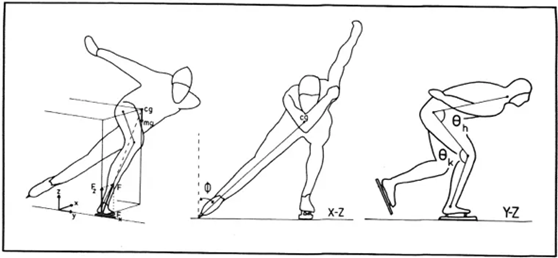
Main Movements –
Straightaway phases –
Single stroke of right leg:
- Forward Gliding – Knee extensor muscles (Vastus Medialis – inner thigh / Rectus Femoris – front thigh) are pre-stretched in this phase by gastrocnemius and biceps femoris (aka the calf and hamstring, which are antagonistic muscles)
- Push off - Short and explosive catapult-like action. Power output in this phase is by the Gluteus Maximus and Vastus Medialis (leg on ice)
- Repositioning (leg off ice)
Corners –
Series of rhythmic leg crossovers
Short Track:
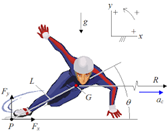
Main Movements –
- Explosive Knee Valgus – Hip adduction and hip internal rotation
- High Front Tibial Shear Force – Contributor to ACL strain and direct
loading mechanism of the ACL.
- Internal Rotation of the Knee
Straightaway phases –
1 glide on each blade (both legs on ice)
Corners – shorter, tighter curves
3 subsections:
- Entry
- Hang
- Exit
Men 500M Short Track Speed Skating Final - Vancouver 2010 Winter Olympic Games
Additional Comparison of Long Track vs Short Track
The Long and Short of It
| Short Track | Long Track | |
| Lap Time – from a dead start – in 500m race | 11.0s (111.12m) | 28-30s(400m) |
| Maximum Speed / Velocity Achieved | 35-40 mph (56-64 kph) | 37-40 mph (59-64 kph) |
| Average Time Per Straightaway – flying start | 20-2.5s | 7.0s |
| Average Time Per Corner | 20s | 6.0s |
| Average Height – Male | 5 ft. 7 in. (1.76m) | 5 ft. 9 in. (1.80m) |
| Average Height – Female | 5 ft. 4 in. (1.66m) | 5 ft. 5 in. (1.69m) |
| Average Weight – Male | 157 lbs. (71.5 kg) | 170 lbs. (77.4 kg) |
| Average Weight – Female | 126 lbs. (57.2 kg) | 137 lbs. (62.5 kg) |
Short Track Notes
- Larger fluctuations in speed = a higher physiological load than in Long Track
- Higher intramuscular forces on right leg muscles are relatively more deoxygenated than in Long Track
- A training session leads to higher fatigue in the hours after = a longer recovery needed than in Long Track
- More physiologically demanding than Long Track (see the previous facts above)
- Slightly smaller / lighter and shorter limb athletes (an advantage to cut the corners low and tight)
Long Track Notes
- Exhibits a more symmetric profile in terms of oxygenation than in Short Track (on a straightaway)
- Rhythmic leg crossovers = a more stable value for deoxygenation – larger for right leg (in the corners)
- Taller and longer limb athletes (an advantage in taking longer strides)
Summary
In determining which side of the aisle you want to skate on, take all these factors into account, as well as do your additional research. Realize that if you think you have what it takes to compete on the highest levels of Speed Skating, among other things, it requires time, discipline, determination, drive, and excellent training habits. This comparison should be a good starting point if you are new to the sport.
In future articles, we will examine how Strength and Conditioning impact both Long and Short Track Speed Skating in areas such as Speed Development, Injury Prevention, Active Warm-up, Strength Training Methods, as well as Adjusting to Life as an Olympic Speed Skating Strength and Conditioning Coach in a Foreign Country.

